The word “SEO content writing” seems fancy when someone talks about it. Moreover, with concepts like “SEO is dead” and “AI will replace humans”, writers are increasingly concerned about creating quality content.
Reason? They are worried about their content being ranked.
Similarly, algorithms keep on changing so some people go for quick fixes to rank their content.
That's dangerous too. It is like inviting search engines to penalize your website.
So what has to be done?
Here I have decided to clear the air regarding SEO content writing and will tell you all the secrets of writing a good piece of content that actually ranks.
Believe me, just follow a few definite rules and you will be able to spice up your online presence. Let's jump in!
What is SEO Content Writing?
SEO content writing is the process of researching, planning, writing and optimizing your website content to get higher rankings on search engines’ results, especially Google.
This higher ranking helps you to get noticed by your audience, resulting in increased traffic and conversions.
It sounds very good but in reality, it takes a lot of effort to get those higher rankings.
Google uses more than 200 ranking signals in its algorithm to rank a piece of content. We don't know all of them, but SEOs keep on guessing based on their research and experiences.
You cannot perfectly align your entire content for those signals at once, but at least you can put in as much effort as you can to make it:
Valuable for readers
Search engine friendly
This would help you create a winning content.
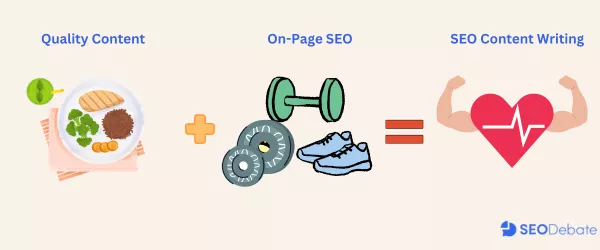
Is SEO Content Writing Different from Content Writing?
Yes! There is a slight difference between content writing and SEO content writing.
The former focuses on providing informational content and does not depend on factors like keyword research, competitive analysis, optimization, etc.
Whereas the latter focuses on creating optimized content, with an emphasis on choosing the right keywords, content optimization, and competitive analysis to ultimately get more organic traffic.
Put simply, content writing is all about creating engaging and useful content that establishes your brand as an authority in your industry.
On the other hand, SEO content writing makes use of the relevant keywords or phrases to let search engines know what your website is about to get higher rankings.
Is it Important to Write SEO Friendly Content?
It depends on the goal.
If you simply enjoy writing or you are doing it for a platform that has a built-in audience like Medium, YouTube, etc, SEO writing may not be necessary.
But this happens very rarely.
Most of the time, you need to optimize your content especially if you want to:
Promote a product or service
Need to get more traffic
Earn better reputation
Increase brand awareness
Need competitive advantage
Get high ROI
Want more leads, conversions, or sales
SEO writing is a way to bridge the gap between your content and the targeted audience. If you don't optimize it, even the most useful blog for your audience might go unnoticed.
Sounds good now!
Read on to learn how to create optimized content.
14 Steps for Creating SEO-Optimized Content
Now I am going to cover all the important aspects of writing fully optimized content.
Follow them in a step-by-step manner.
Begin with Your Seed Keyword
Choosing a seed keyword is the first step.
This is the topic you want to write on. If your website is about “dietary supplements” you can choose it as your seed keyword.
Using a keyword research tool like Ahrefs or Semrush is best to get a primary keyword.
Just enter a keyword you want to write on and they will show you a list of several keywords related to your topic.
Here I used Semrush Keyword Magic Tool.
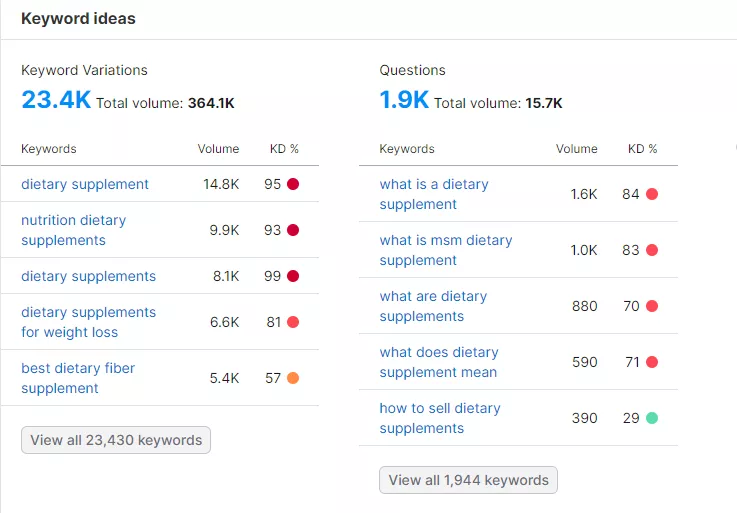
Now you can see there are thousands of keyword ideas. You must be thinking, am I required to write on all of them? Definitely not!
Here is the criterion for choosing a primary keyword:
Your keyword must be relevant to your website.
It must have a reasonable search volume. If no one is searching for it, you won't get noticed even if you rank at the top.
Your chosen keyword must also have a low keyword difficulty.
If your website is new, I would recommend choosing keywords that have a KD of less than 30 and a decent volume of more than 1000.
In the above example, you can see that the “best dietary fibre supplement” has a fairly good volume and KD 57. So that could be a great starting point.

But let me remind you once again, if you are just starting out, choose keywords with a lower KD.
Support your Content with Secondary Keywords
Finding a seed keyword isn't enough.
You must have relevant secondary keywords to support it. This is required because it helps search engines understand the content and its relevance.
If you are using Semrush, then it is quite easy to find the relevant secondary keywords.
Just look at the left side where there is a group of keywords that are closely related to your main keyword. Clicking it will give you a list of other keywords.
These variations will give you more ideas to incorporate in your content as secondary keywords.
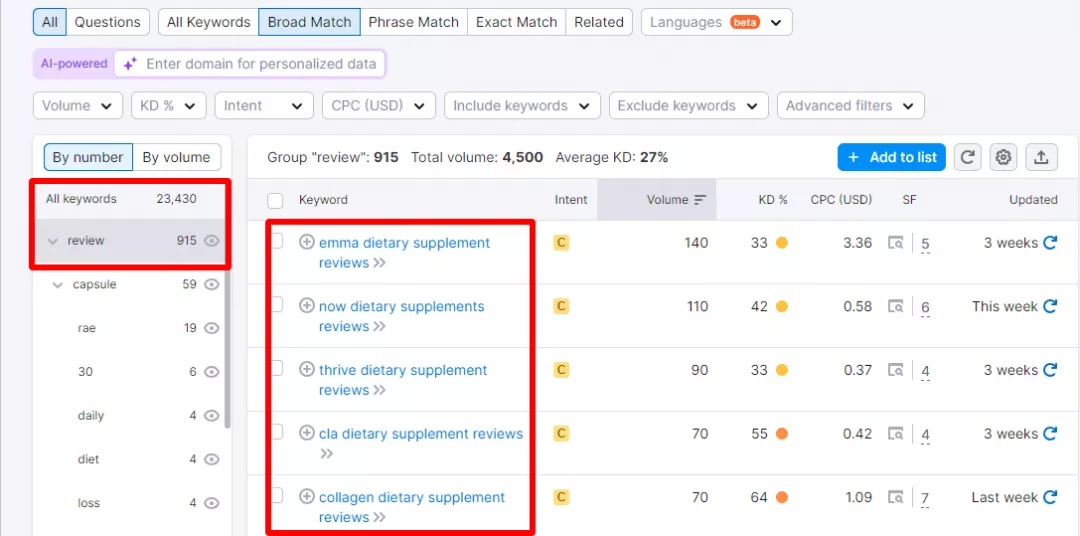
Additionally, you can click the “Questions” tab. This will give you a lot of questions as secondary keywords to add to your content.

You can also do this process manually by typing your main keyword in the search bar. Now look at the “People Also Ask” section to get ideas.
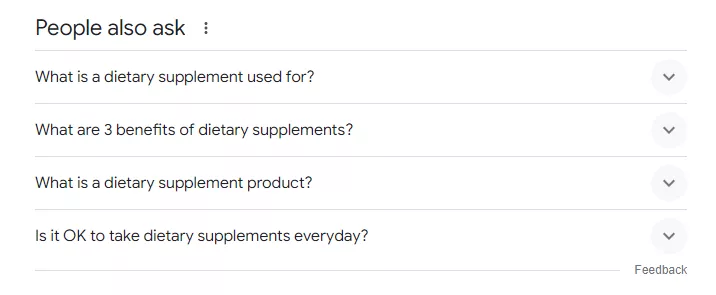
Identify and Meet Search Intent
Once you have identified a primary keyword, your next must be to look for its search intent.
This process is straightforward. You simply need to go to Google and type your primary keyword. Look at the search results.
See which types of pages are ranking for this keyword. You may find:
How to guides
List articles
Informational content
Tips
Buying guides
Comparison posts
Tutorials
I typed the keyword “Best dietary fibre supplement”. Here all the web pages that are ranking on the first SERP are listicles. They have a list of the best products.
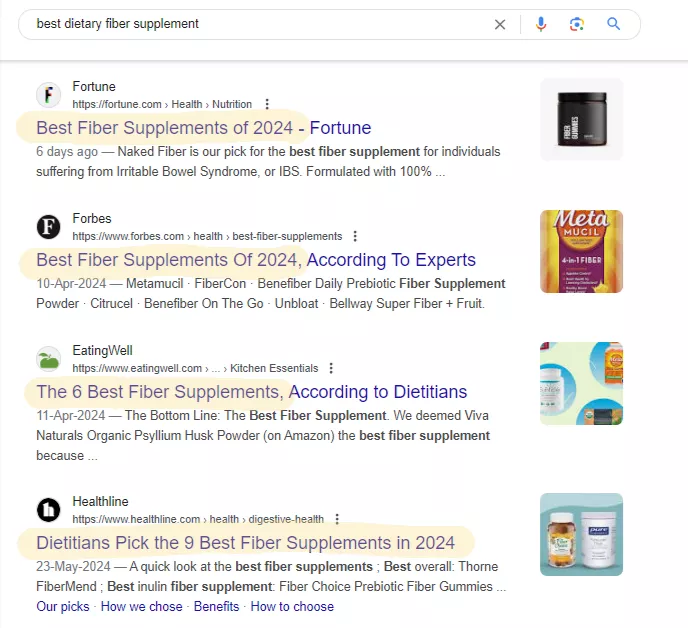
That means you also need to cover all this in your content. It indicates that people are searching for it.
If you go against the search intent, you are unlikely to get ranked.
Keep in mind it is not enough to just add or simply rewrite whatever you saw on the internet. You need to cover a topic comprehensively and provide additional value.
This is what Google recommends:
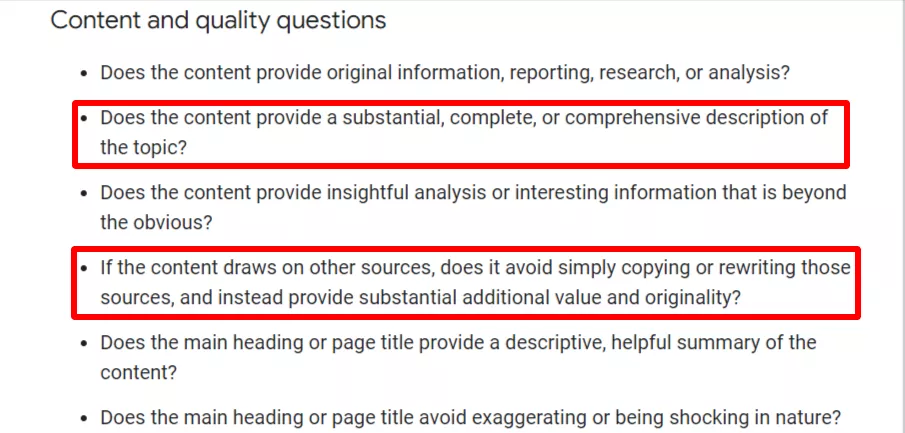
Suggested Reading: If you have no idea how to cover a topic comprehensively, I would suggest you read my post on content gap analysis.
Create an Outline
Now you know what to write about after collecting your keywords and understanding search intent.
But before start writing, you must create an outline. This outline will help you understand and plan your entire piece of content.
This outline includes headings, subheadings, useful resources, and any other additional data you want to add.
You may also ask ChatGPT to write this outline for you. For that just give it a clear and concise prompt. It will generate a comprehensive outline for you.
Let's suppose you want to write a blog on “How to perform competitive analysis”. You can use a prompt like this:
Write a comprehensive outline for my blog post about “How to perform competitive analysis”. It must have a definition, why is it important, what are the ways, some additional tips, etc.
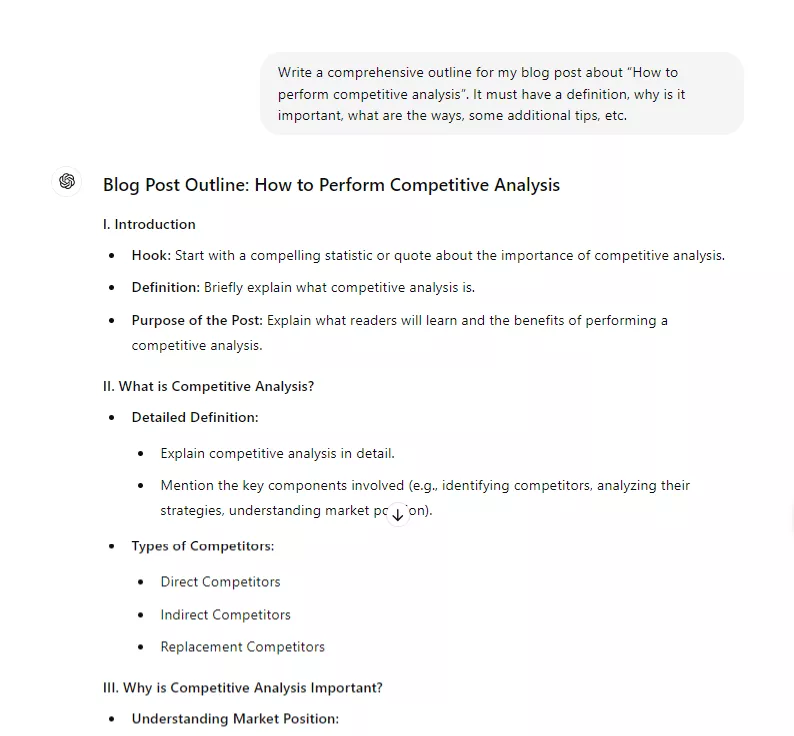
Make a Draft before Writing your Final Content
Based on the outline you generated using AI, write a draft. This draft does not have to be very perfect.
You can make mistakes as it is only meant to pen down your ideas and get suggestions from the editors or experts.
Write according to headings. You can change, update or improve those headings or subheadings. Also, add statistics or data you have collected during your research process.
If you have not made your images, charts or other relevant media ready, you can mark the places where they need to be added. This will prevent you from forgetting to add them to your content.
As you already know SEO content writing is different from other forms of writing. So in the end, make sure you have added all the relevant keywords along with your focus or primary keyword.
Not only this, you must also watch whether you have covered this topic comprehensively and meet the search intent or not.
Write Quality Content
What makes quality content? If it is:
Accurate
Unique
Authoritative
Meet E-E-A-T guidelines
Informative
Engaging and actually provides value to its readers
The best way to judge the quality of content is by asking yourself as a reader is it worth reading.
You can also use Google’s documentation to create and self-assess your content quality.
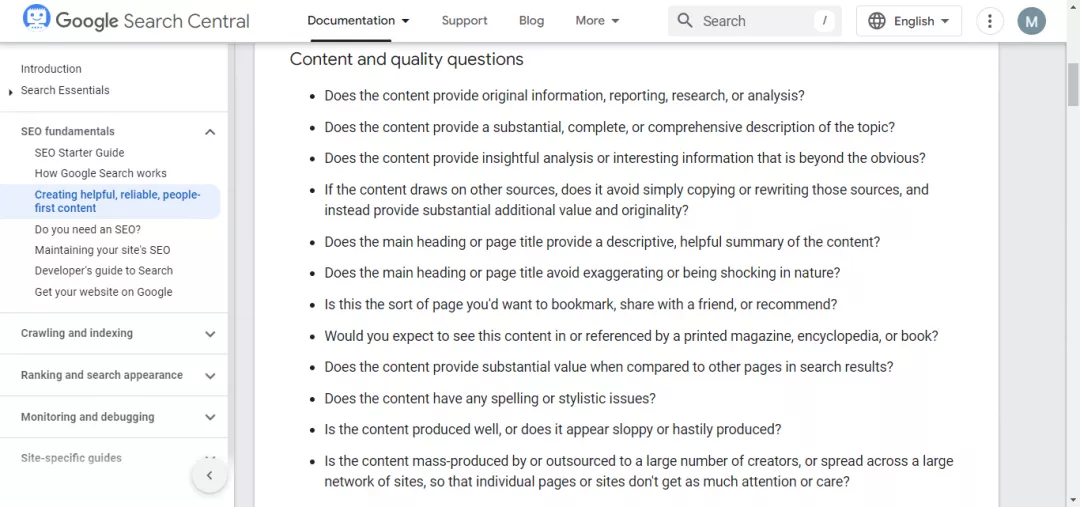
Google prioritizes content with first-hand experience. So if your website has YMYL topics, you must hire someone who is an expert in that field.
Google has set the highest standards for those topics as they can have a severe impact on people and their decision-making.
YMYL (Your Money Your Life) topics are those that can have a significant impact on the lives of people, like health, finance, and legal matters. So they must be chosen and written carefully.
Ideally, it’s recommended to hire a person who is an expert in a relevant field and also knows how to write.
Moreover, you can also make several other efforts to reflect quality in your website content.
Do interviews with relevant industry experts. Take advantage of their knowledge and experience to make your content insightful.
If you can write a topic from your own perspective, it is the best way to write content. For example, you can follow a diet for 30 days, you can implement an SEO strategy for 6 months or run an email outreach campaign to 1000 companies. After experiencing something personally, you can tell your experience in a better way. This builds trust with your visitors as everyone loves to hear personal stories or experiences.
Instead of presenting the same old data or stats that every other website has covered, you can create something unique. For that, you can engage your audience on various platforms by running polls/studies. Add the results of these studies to your content and provide a unique perspective.
While concluding your blog or a particular section, do not forget to give your own opinions. People want a definitive answer from an expert. When they are confused about what to do, they love to get a to-the-point answer from an expert. So providing that answer will not only help them make a decision but will also make them rely on you.
Optimize with Keywords
Now it’s time to optimize your content with the keywords you collected during the first step.
Add them naturally throughout your content. Make sure to avoid keyword stuffing as Google strictly penalizes those websites.
Here is an example of a keyword-stuffed paragraph:
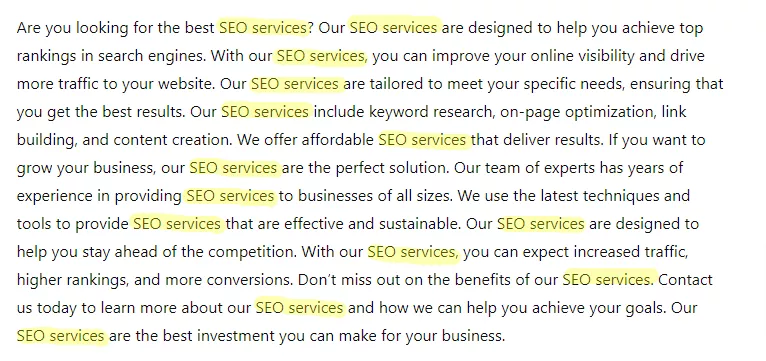
Avoiding keyword stuffing is very important as it distracts the readers and also looks spammy to search engines.
It is best to add your keyword or its variations in:
URL
The first 100-150 words of your blog post or article
H1 tag
Subheadings
Structure your Content with Headings and Subheadings
Divide your entire content into various sections and sub-sections by adding headings.
These headings make it easy to read the entire page. Otherwise, the larger blocks of content will make it harder for any reader.
When you organize your content into various sections by using headings, you make it easy for both search engines and users to navigate your content seamlessly.
Suggested Reading: Read more about header tags and learn how to optimize them in this detailed guide!
Focus on Readability
Readability is another aspect that you must focus on.
If your content is difficult to understand, it is highly unlikely that your visitors are going to stay on your page. For that, you must focus on improving your readability score.
This will make your content easily scannable and engaging. When more people are going to stay longer on your pages, it also hints to Google that your content is worthy.
So what will you do?
Use simple words
Break text into short sentences
Use active voice
Use bullets or numbered points
Highlight, bold or italicized important but short lines
You can also use various tools to check your readability, but my recommendation would be to check it manually.
Human review is much more trustworthy and reliable than tools!
Add Internal Links
Internal links direct the users towards other useful resources on the same website.
This helps Google crawl your website pages more efficiently and makes the content user-friendly.
While writing content, you will find several other posts on your website that can help the users explore a topic more.
You can add internal links there to let people understand a topic in detail.
All those blue-coloured words are internal links, that tell visitors to read other relevant content on this site.
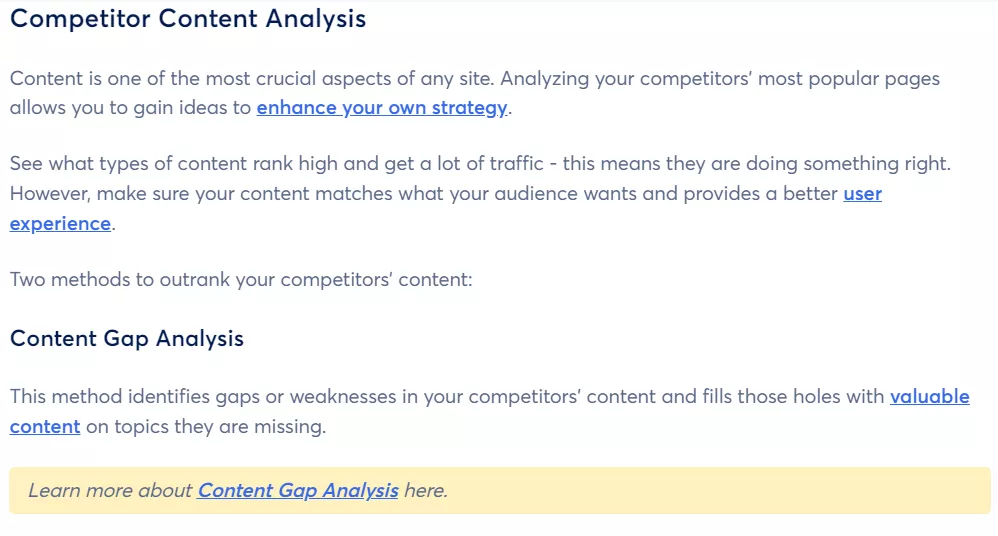
Internal links are also useful from an SEO point of view. They transfer the link equity that helps those pages rank higher too.
While doing internal linking, keep a few things in mind:
Those links must be relevant
They should be added naturally
Anchor text should not be misleading
Do not use the same anchor text for two different pages
Though you can do all this process manually, some tools can also speed up this process such as the ahrefs Site Audit tool.
To do this, you need to run a site crawl. Once completed, it will tell you which pages to link to and from. This will also tell the anchor text or keyword to use while linking.
Optimize for Featured Snippet
Featured snippets are the short text snippets that appear at the top of search results. They provide a direct answer to your questions.
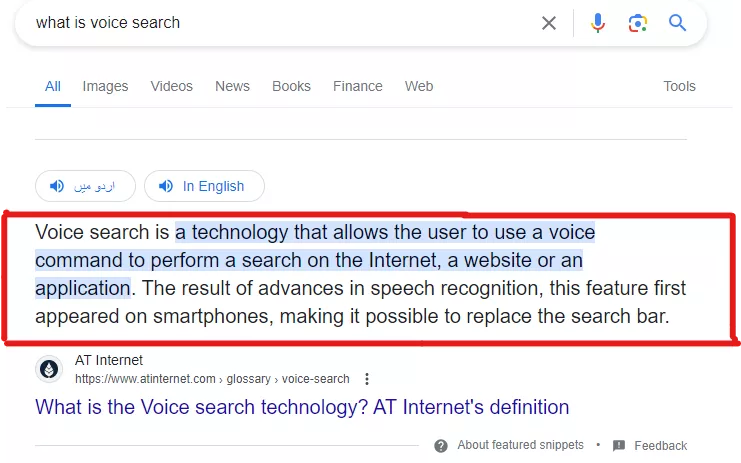
They occupy the zero position on search results and increase your chances of getting more clicks, so why not optimize for them?
If you are writing content then make sure to do a little research to maximize your chances of being displayed there.
Type a keyword of your blog post and see if any featured snippet appears for this. If yes, then see its content.
Analyze the format of those articles to see if they are listicles, how-to articles, tables, charts, etc.
This analysis will help you understand what users are looking for. You can steal this position by:
Making your content easy to read and understand
Providing additional value
Following the same format as this featured snippet
All this will increase your chances of occupying that zero position.
Write a Compelling Meta Title and Description
A title tag appears in the search results and tells Google and users what your page is about.

There are a few things that you should keep in mind while writing your title tags:
Make your titles enticing by using “power words” like perfect, remarkable, etc.
Do not forget to add your focus keyword in the title, especially at the beginning to show relevance to search engines.
Keep it 55 characters long to avoid cutting off letters or words by search engines.
Meta description, on the other hand, is a short summary of your page or post that appears just below the title tag.
It isn't a direct ranking factor but may contribute to it indirectly by increasing CTR.

It is not necessary that Google will always choose the meta description set by you. It may choose one on its own that it thinks is more relevant.
However, keep those things in mind while writing meta descriptions:
Use simple language to make people understand the content of the page.
Use phrases like “Learn more”, “Read on”, “Jump in” etc to encourage users to click on it.
Keep it short, ideally under 150 characters.
Just like the meta title, add your focus keyword there too.
Directly address the searchers and meet their intent.
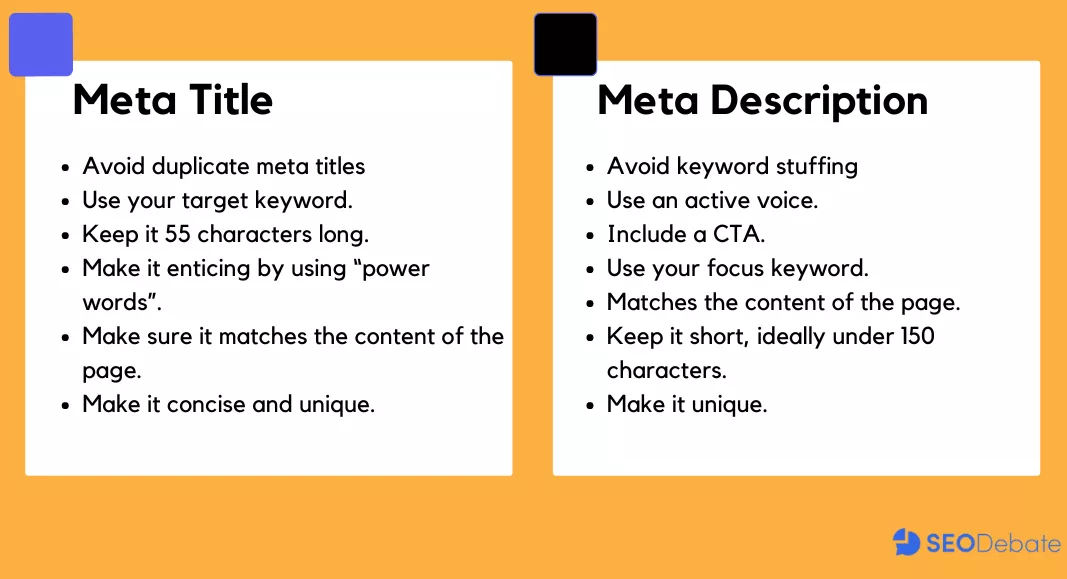
Optimize URLs
There are a few general rules for URL optimization:
Add relevant or focus keywords in your post URL.
Make use of hyphens to separate different words in a URL as it is standard and recommended way.
Strictly avoid adding dates.
Remove stop words as they unnecessarily make the URLs long.
Keep them concise and descriptive.
Get Feedback from an Expert
We as humans make mistakes, so having an expert overview is essential to make your content perfect.
This review highlights any text inconsistencies, lack of flow, grammatical errors, and inaccurate sentence structure.
Moreover, it also makes sure the information provided is top-notch, accurate and updated.
Other than an expert, you may also ask your colleagues or relevant people to have a look at your content. This will help you further refine your content and its overall structure.
Once the final review is completed, you can now make the necessary changes to make your content look perfect.
What are Some Other Things to Do?
Of course, there is always room for improvement. So you can consider several other things to make your content compelling, such as:
Adding visuals like images, videos, infographics, data charts, etc.
Adding external links to useful resources wherever they are necessary.
Updating and optimizing your content over time with the help of your SEO team.
Testing your content by looking at the feedback, user experience, heatmap, etc. and making changes accordingly.
Adding social media sharing buttons and making them easily accessible to the readers.
The Bottom Line
To sum it up, SEO content writing is all about creating valuable content that is actually helpful for the users.
If your content is stuffed with keywords, lacks authenticity and just has a rewritten version of other websites, it will not get the favour of Google or the visitors.
So to get on the top of the search results, increase organic traffic, gain long-term benefits, and establish your brand as an authority, you must put in additional effort to create high-quality content.
That way you can make your SEO writing process effective and efficient.


